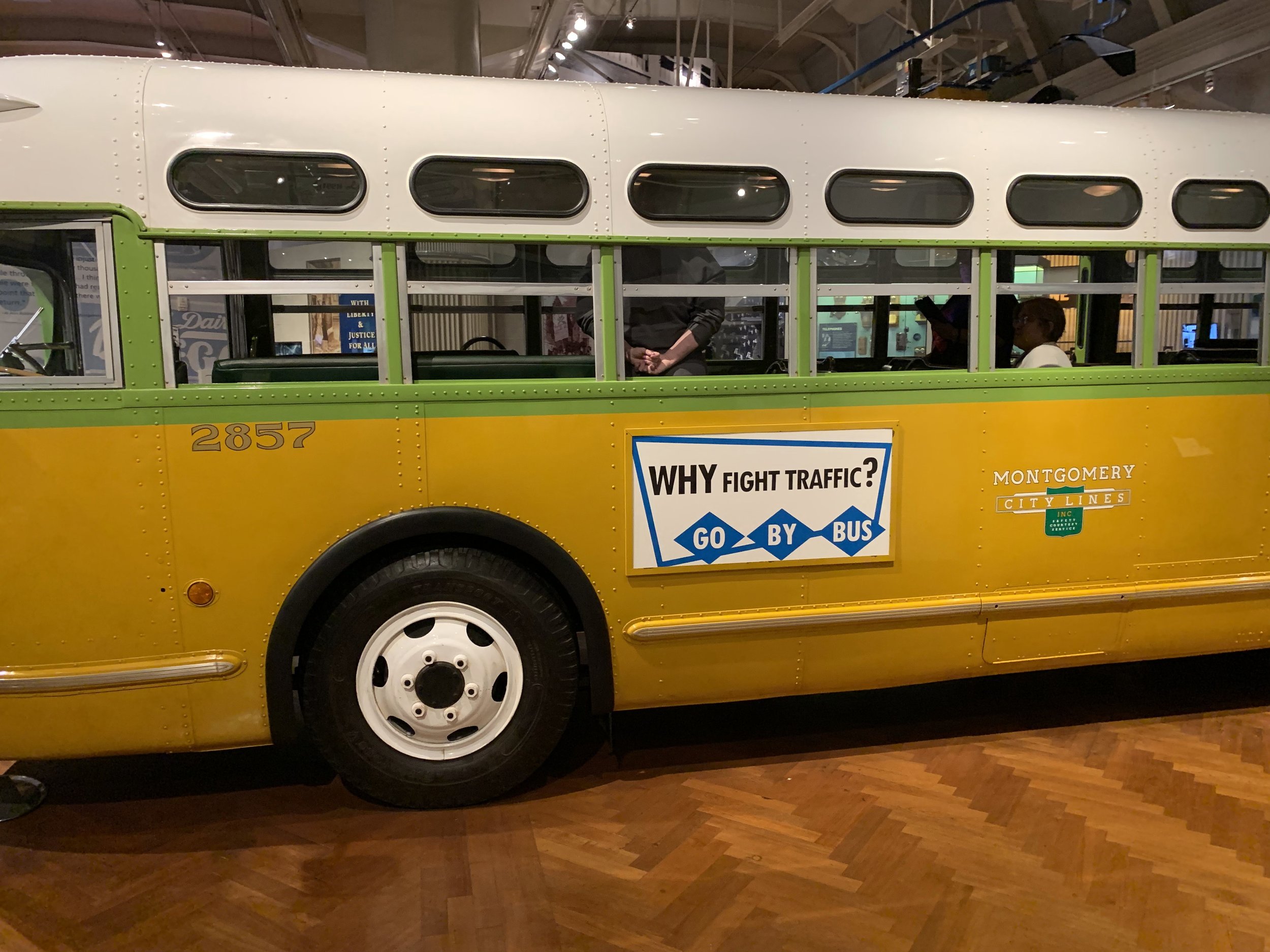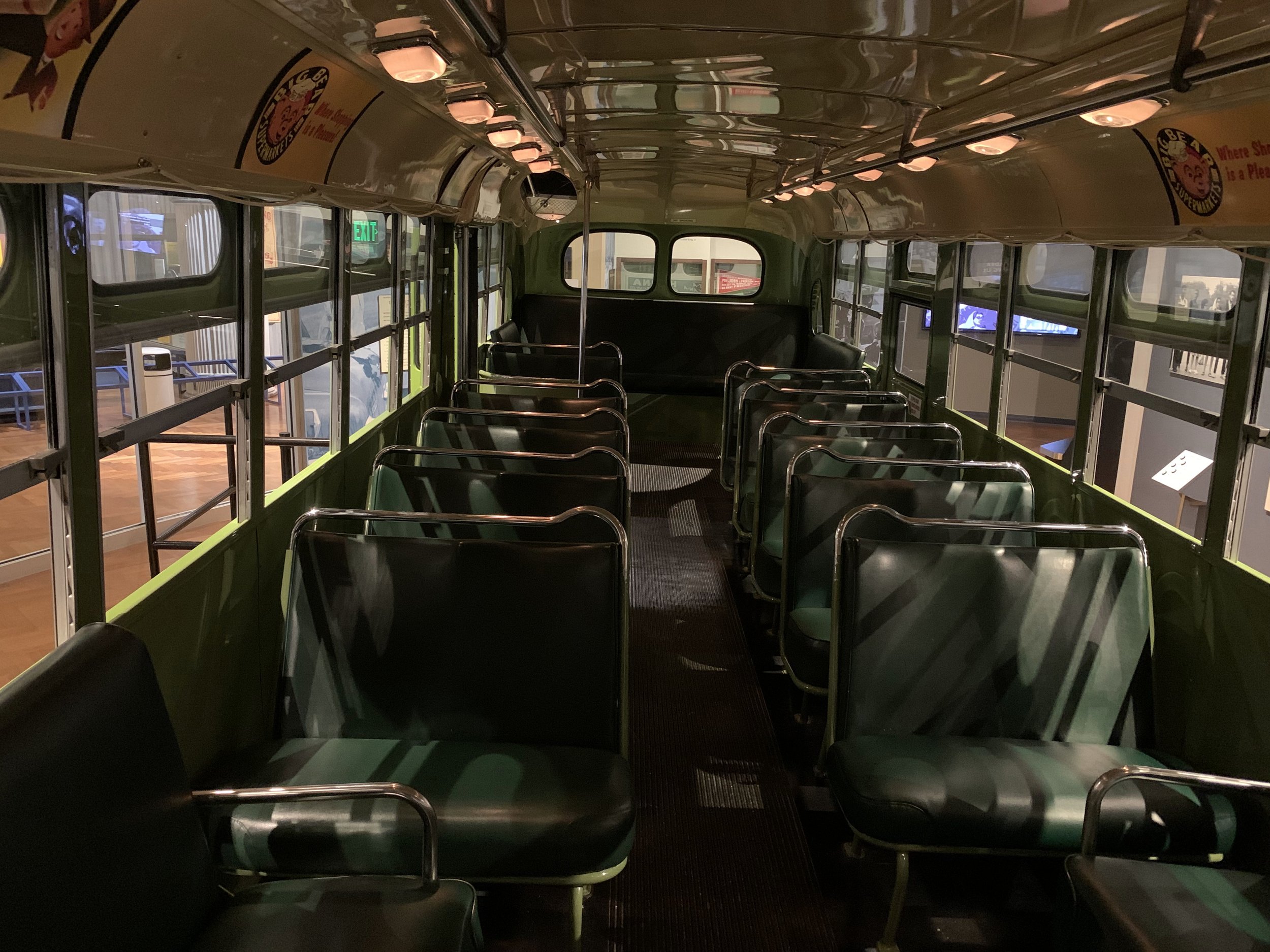Montgomery Bus #2857





















The Henry Ford Museum of American Innovation in Dearborn Michigan is home to one of the most eclectic and historically significant collections on Earth. Mr. Ford had an eye for history, and a lot of money to throw around at a time when money really could buy anything. From the Wright Brothers’ home, to the car that Kennedy died in, to the chair that Lincoln died in, every inch of this museum contains some relic of mind blowing importance. For today’s adventure though we’ll focus on one of their more recent acquisitions, Montgomery Bus #2857.
On October 25th 2001 The Ford Museum purchased this dilapidated bus from the family of Roy H. Summerford for $492,000. Mr. Summerford had acquired it at a public auction when the Montgomery Alabama City Line had retired it in the early 1970’s. For almost 30 years the bus set on Mr. Summerford’s rural property acting as a tool shed and lumber storage space. When he originally purchased the bus, employees from the City Line had shared a rumor with him that the bus might just be something special, but he never bothered to investigate further. Realizing the potential value of their father’s tool shed, his children set out to validate the rumor, and sell off this priceless piece of history.
On December 1st 1955 bus 2857 hosted an act of defiance that helped spark a revolution for equality. A tired young black woman on her way home from work refused to adhere to a local law requiring her to relinquish her seat on the crowded bus to a white passenger. Police were called, and Rosa Louise McCauley Parks was arrested.
The story as presented to us in grade school was that Rosa was simply a tired young woman fed up with unfair policies who decided to take a stand one day. The truth though is actually quite a bit more impressive. Rosa worked as a secretary for the local chapter of the NAACP, and was actively involved in the civil rights movement. She was part of a network of educated young African Americans who were specifically looking for a chance to challenge the law on bus segregation. A full 6 months before Rosa’s act of defiance, on March 2 1955 a young woman named Claudette Colvin was actually the first African American to challenge bus segregation. However Mrs. Colvin was 15 years old, unwed, and pregnant, which made her an easy target for segregationists looking to preserve the law. For this reason local leaders of the black community declined to support her, and instead waited for a case like Rosa’s to champion.
This often overlooked part of the story is key to understanding just how much of a fight the civil rights movement really was. This wasn’t just a case of a tired young woman having a bad day and accidentally changing the world, this was a massive network of people fighting tooth and nail for their basic human rights. What happened to Claudette Colvin was a tragedy, but people at the time refused to see it. Any perceived weakness in her character invalidated her basic human dignity, and instead groups like those led by Dr. Martin Luther King had to wait for someone like Rosa, a well educated, morally upstanding, member of the community. With someone like Rosa, the only perceivable reason to view her as lesser was the color of her skin, and created the perfect challenge in a legal system where “all men are created equal”.
Although today the events of December 1st are looked upon as a triumphant moment for human rights, at the time her case was controversial and not exactly a proud moment for the city of Montgomery. Police reports at the time failed to even capture the bus’s identification number, and it continued service as a transit bus in the city for almost 20 years. When the Summerford family was looking to authenticate the bus's claim to history, they were ultimately only successful because a station manager with the bus system followed the case closely in his scrapbook, and took note of the bus number in honor of his job’s unique link to the news. With the bus's identity confirmed it was able to fetch that impressive price at auction, and following a $300,000 restoration effort that returned the bus to it’s 1955 state the museum had itself a truly one of a kind piece of history.
Given it’s incredible role in one of the most important moments of the 20th century you’d think that bus 2857 would be walled off behind glass, but the museum has brilliantly chosen to make this artifact a truly accessible piece of history. You can touch it, walk inside it, and even sit down in the exact spot where Mrs. Parks refused to vacate (the original seat is lost to history, but the current layout uses period correct seats installed in exactly the correct locations). A staff member is on hand to talk you through the history of the bus and that fateful day, but you’re also free to just sit there in silence and drink in the history.
During an April 2012 visit to the museum President Obama declined to sit in Rosa’s seat, saying that he didn’t want to overshadow her place in history (he chose instead to sit in the seat beside hers). Coming from America’s first black President, I fully respect that position. For me though, as a white man born into incredible privilege, I had to sit there to try and understand. It was a person sitting down in a chair, basically the most simple act imaginable. My legs and butt completed that action as easily as any white man in 1955, and it was no big deal. For Rosa Parks though, for no reason other than the color of her skin, taking that seat was one of the most controversial acts imaginable. Although it led to a breakthrough in civil rights for African Americans across the county, she would pay for this action by receiving death threats for years after the event. Imagine wanting to kill someone over a bus seat.
Sitting in that historic seat, in a meticulously restored bus, you know exactly what Rosa saw that day, which makes it very easy to think about what she felt that day. I’m a straight, white, cis-gendered, male, American. It’s impossible for me to ever truly know what it feels like to face that kind of discrimination. So during my time on the bus I found my thoughts first going to rage over the incredible acts of cruelty my forefathers committed, but rage is pointless, hate cannot solve hate. Thankfully the bus features a picture of Mr. Obama’s visit, and a quote from him about the experience. It pretty well sums up the very core of America, the idea of a people’s struggle for freedom.
"I just sat in there for a moment and pondered the courage and tenacity that is part of our very recent history, but is also part of that long line of folks who sometimes are nameless, oftentimes didn't make the history books, but who constantly insisted on their dignity, their share of the American dream."
Want to Experience This Adventure for Yourself?:
The Henry Ford Museum of American Innovation
20900 Oakwood Blvd, Dearborn, MI 48124, United States